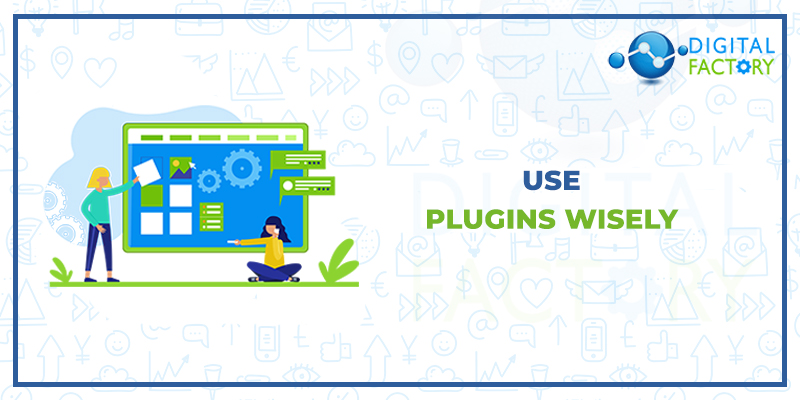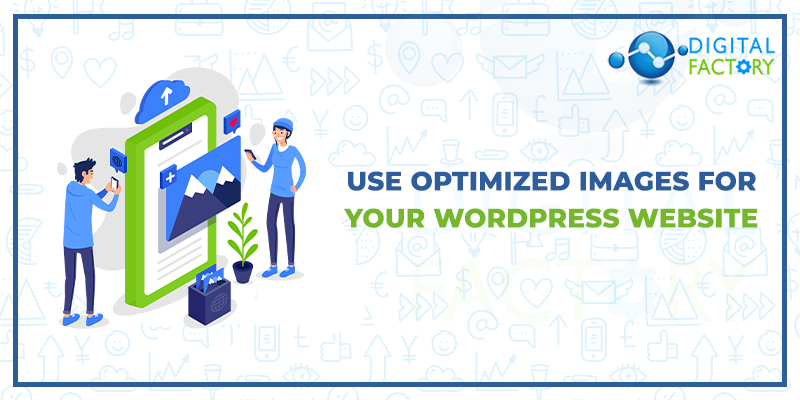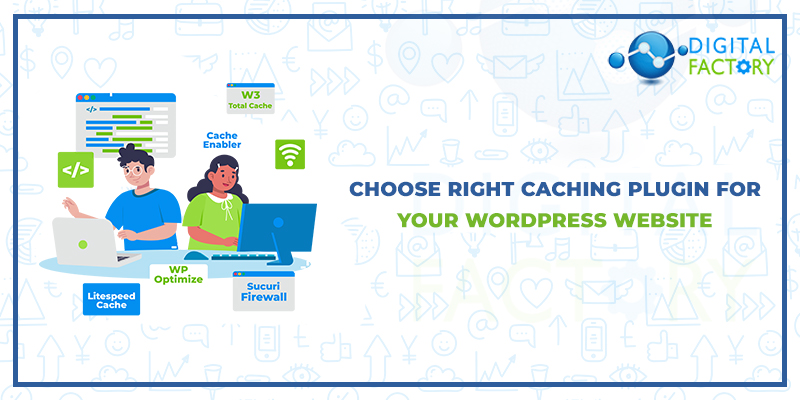Ever since Google announced the launch of page speed as a metric used to determine SEO ranking, website owners have made making sure their websites look good and load quickly a top priority. The length of time a page takes to load can affect whether visitors leave the page before it fully loads. A slow loading website can result in a significant loss of traffic and conversions. In this guide, we’ll discuss how to speed up WordPress website and a list of actions you can take to improve your WordPress website.
How To Check A Website Page Speed?
It’s best to first evaluate the current situation before looking at different techniques to speed up WordPress websites. This can help you understand to what extent you need to optimize your website. Testing your website before optimizing also gives you a benchmark to compare the results of future optimizations. Now let’s look at some testing tools that you can use to test your website based on your specific requirements, budget, and technology. Use a website benchmarking tool for evaluating the performance of websites powered by WordPress. Simply proceed to the website benchmarking tool homepage and enter the URL of the website you would like to analyze. One limitation of the free version is that you cannot set the test server region and browser settings. However, the paid version gives you more control and the ability to save your history.
Three key metrics:
Page load time
Total page size
Total number of HTTP requests
AnalyzePage Speed Analyzer is a free web tool from Google Developers that you can use to evaluate the performance of your website. All you need to do is enter your URL to start the trial. In an effort to enhance mobile website performance, Page speed Insights focuses on mobile devices. While you may not be able to control the specific device on which the test is run, a benchmark provided from this tool helps with overall optimization. Web pageTest WebPageTest is a free, open-source performance testing tool. It allows you to have much more control and understanding over the testing environment. Not only can you specify the device and location to run the test, but you also have the option to design custom tests to generate custom website metrics. Now that we have covered how you can measure your website speed, let’s take a look at a few tools that can help you speed up WordPress sites.
1. Choose a Fast Web Host to speed up WordPress
When a visitor to your website lands on a page, their browser sends a request for that page to your server. The response time of a server greatly affects how long it should wait when it is to respond. Regardless of how efficient your website is, the performance of the server is a key factor in the speed up WordPress at which a visitor’s request is processed. A person must first decide which kind of Web hosting he or she desires, before settling for it. Are you content with the relatively slow performance of a shared hosting platform, or do you require a specialized, dedicated WordPress hosting platform? The choice is usually a compromise between the speed of the decision and the price of the decision. This is our complete guide to choosing among the fastest hosts for WordPress. In short, I recommend SiteGround if you are looking for a reliable and cheap solution. If you would like to obtain the best performance and possess a tighter budget, then try Kinsta managed WordPress hosting.

2. Use a Lightweight, Flexible Theme
The theme you select for your WordPress site greatly speed up wordpress site speed. Since most website owners prefer to change the appearance of their websites with no performance issues, it is important to choose a WordPress theme that is efficient and loads quickly. It is essential to choose a lightweight theme based on your needs. We can say that our collection has the fastest WordPress themes in the world.
3. Use Plugins Wisely
You can claim the growth of WordPress to the community that maintains and develops plugins. By selecting only the plugins that you absolutely need for your website to function, you can significantly reduce your website’s maintenance costs as well as cut down on your website’s bandwidth requirements. Each plugin adds complexity to a WordPress site, so it’s good practice to re-evaluate your site for each plugin. Make sure users disable or remove any unnecessary plugins. Deactivate or uninstall the plugins and try again if something conflicts with your theme. The Health Check and Troubleshooting Website WordPress Plugin Health feature can assist you check for conflicts between plugins.

4. Optimize your WordPress Database
Your WordPress software connects with a database that helps you shop your web website online-associated information within the background. The database basically stores child-oriented content material, such as personal profiles, personal information, profiles, games, blog posts, media content, etc.
Your needs for information, the problems you’ve encountered and the solutions to them all can escalate for 3 reasons. With the help of future machines, people who do not speak but who are able to write can communicate by typing their thoughts directly to a database. Second, cycles of information access and elimination can fragment your database, so within some areas of your databases, commonly placed elements may escape notice. Thus it makes sense to hold your database lean via means of casting off undesirable information via email and unapproved comments, publication revisions, and trashed posts. WP Optimize is a plugin that helps you to optimize your WordPress database via means of substituting old, redundant or outdated data and fusion all your data into the database.
5. Use a CDN to Deliver Resources
A content delivery system consists of a group of web servers stationed in strategic locations around the world. Essentially, it could be extended to any form of exchange or communication in which the future machine is used to transmit the resource to a client by downloading and confirming that the information is already present on the server. A quick scan of the HTTP Archive shows that pages on typical WordPress sites weigh around 2.3MB in 2020. A significant portion of this page weight consists of images, fonts and stylesheets, and scripts. This total page weight does not exceed 557 KB (not counting margins, padding and character height). In order to eliminate bandwidth requirements for data, a site or server needs to be able to store any kind of data from any source without interruption or delay. A CDN allows the loading of such Data from a data center around the world in minutes.’ I recommend the Key CDN, an affordable CDN solution for webmasters.
We have secured the use of CDN to improve the transportation of vital assets to the customer, and take a second to improve the asset. Images make up almost 1/2 of the payload and are an essential component of web web pages. We often fail to notice high quality practices to improve the website for performance.
6. Get your Images Ready for the Web
As a way of making sure the extension matches the pix to ensure accurate stretching. Since the favicon is significantly smaller in length, you may need to resize your brand and add a smaller version of it.
Image optimization
Make sure you upgrade images so they look more beautiful. Image optimization is the process of compressing images to provide the best possible identification to the eyes of the Internet. Both can be upgraded internally or used as a plugin for the purpose.
If you want a WordPress plugin that integrates with all your upload settings and functions, you can use Imagify, a free WordPress plugin that enhances your images in real time. If you want to use the desktop app to enhance images before uploading, you can try ImageOptim. You can see our roundup of the best WordPress image optimization plugins. This image enhancement technique saves valuable bandwidth for both the website owner and the visitor. It also reduces side load time by delaying the download of a significant portion of the payload. When there are plugins that allow you to perform lazy loading, it is worth considering that WordPress adds it as a key feature.

7. Manage static files efficiently
Along with images, style sheets and scripts make up a significant portion of the web page’s payload. Now let’s see how to efficiently make these static files available to your audience. First, you can narrow down your stylesheets and scripts to minimize the size of your resources. The minification process removes parts that are not needed for the operation of a file. This includes spaces, comments, and unused code. You can manually reduce your resources by using a service like minifire. However, for a WordPress site, using a minify plugin such as WP Super Minify to save all the resources on your site at once will save time. You can load some of your style sheets and scripts asynchronously. If you do this, loading unwanted resources will not stop the page from rendering. Here is a tutorial on how to differentiate JavaScript parsing in WordPress. Finally, you can enable GZIP Summary to further compress your resources. GZIP compression is a technique in which the server sends compressed files to the browser, which are then compressed when the download is complete. GZIP abbreviation is a common feature of cache plug-ins.
8. Improve HTTP requests
When we talk about payload in detail, we should also talk about how we deliver it to the customer. You may have noticed that many of the issues reported by performance appraisal tools are related to HTTP requests. Regular measurements include how many HTTP requests your website has. How many redirects they contain and how many DNS searches the browser has to do to download all the resources. The simplest way to reduce the number of HTTP requests is to link similar files. For example, your website should have a single CSS style sheet. All custom scripts must be merged into a single file. As the number of HTTP requests decreases, so does the loading time of the page. If you are using a minifire plugin, select one that focuses on attaching identical files. You can also reduce the number of DNS searches to improve your HTTP requests. Each time the browser finds the hosted resource in the new domain name, it must perform a DNS search to obtain the corresponding IP address. By storing your resources in one domain, you can reduce DNS searches. If you use CDN to render your static files, the number of DNS searches is already reduced. Finally, you should reduce the number of redirects to standard sources. A redirect occurs when the original location of a resource is moved to a new location, which means the browser must place a new request to retrieve the resource.
9. Choose right caching plugin for your wordpress website
Cache saves a portion of the page in a cache so that it is quickly accessible to your visitors. Caching can save server bandwidth and reduce page load times.
When choosing a caching plugin for your WordPress site, choose one that offers performance enhancements with easy-to-configure and simple configurations. If you have experience, you should go to advanced settings to unlock extra bonus to speed up WordPress sites. We test and compare the best WordPress caching plugins. WP Rocket topped our test results.

10. Update WordPress and PHP Software
WordPress and PHP are popular software programs that provide process power enhancement. Updates including new features, malicious program fixes, security links and overall performance enhancements are integrated into them every day.
Therefore, it is essential to convert your WordPress, Plugins and PHP to sophisticated variants to retain those enhancements. However, before you trigger an alternative, be sure to back up the sophisticated model of your WordPress site.




